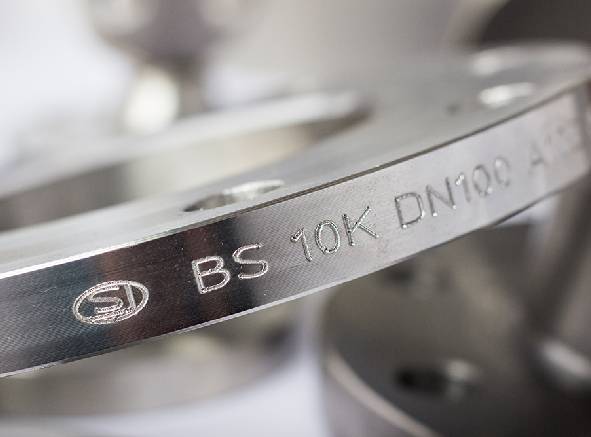-
Cangzhou Yulong Steel Co., Ltd.
-
Phone:
+86 13303177267 -
Email:
admin@ylsteelfittings.com
- English
- Arabic
- Italian
- Spanish
- Portuguese
- German
- kazakh
- Persian
- Greek
- French
- Russian
- Polish
- Thai
- Indonesian
- Vietnamese
- Zulu
- Korean
- Uzbek
- Hindi
- Serbian
- Malay
- Ukrainian
- Gujarati
- Haitian Creole
- hausa
- hawaiian
- Hebrew
- Miao
- Hungarian
- Icelandic
- igbo
- irish
- Japanese
- Javanese
- Kannada
- Khmer
- Rwandese
- Afrikaans
- Albanian
- Amharic
- Armenian
- Azerbaijani
- Basque
- Belarusian
- Bengali
- Bosnian
- Bulgarian
- Catalan
- Cebuano
- China
- China (Taiwan)
- Corsican
- Croatian
- Czech
- Danish
- Esperanto
- Estonian
- Finnish
- Frisian
- Galician
- Georgian
- Kurdish
- Kyrgyz
- Lao
- Latin
- Latvian
- Lithuanian
- Luxembourgish
- Macedonian
- Malgashi
- Malayalam
- Maltese
- Maori
- Marathi
- Mongolian
- Myanmar
- Nepali
- Norwegian
- Norwegian
- Occitan
- Pashto
- Dutch
- Punjabi
- Romanian
- Samoan
- Scottish Gaelic
- Sesotho
- Shona
- Sindhi
- Sinhala
- Slovak
- Slovenian
- Somali
- Sundanese
- Swahili
- Swedish
- Tagalog
- Tajik
- Tamil
- Tatar
- Telugu
- Turkish
- Turkmen
- Urdu
- Uighur
- Welsh
- Bantu
- Yiddish
- Yoruba

Dec . 16, 2024 11:16 Back to list
bending a metal pipe
Bending a Metal Pipe Techniques and Considerations
Bending metal pipes is a common practice in various industries, including construction, manufacturing, and automotive engineering. The process requires careful consideration of the material, the desired bend radius, and the tools and techniques used to achieve the desired result. Whether you are working on a simple project at home or a complex industrial assembly, understanding the fundamentals of bending metal pipes can significantly enhance the quality of your work.
Understanding the Basics of Metal Bending
Before diving into the techniques of bending metal pipes, it's essential to comprehend the properties of the material being used. Metal pipes can be made from various materials, including steel, copper, aluminum, and plastic-coated metals, each possessing distinct characteristics. The strength, flexibility, and malleability of the material will influence how it bends and its ability to withstand stress without cracking or breaking.
The most critical measurement in bending is the bend radius, which is the distance from the centerline of the pipe to the centerline of the bend. A smaller bend radius can create sharper turns but may lead to material deformation and failure, whereas a larger bend radius is safer and often recommended for most applications.
Tools and Techniques for Bending
Several tools can be employed to bend metal pipes, depending on the scale of the project and the level of precision required
. Some common tools include1. Manual Pipe Benders These are typically hand-operated tools that employ a lever mechanism to bend the pipe manually. They are advantageous for small projects and one-off bends, as they are cost-effective and portable.
2. Hydraulic Pipe Benders Hydraulic benders use fluid power to apply force and can handle larger and thicker pipes. They are ideal for professional applications where precision and consistency are necessary.
3. Mandrel Bending Machines These machines provide the highest degree of precision for bending. They utilize a mandrel—a support that helps to maintain the pipe's shape during the bending process—preventing deformities and wrinkles.
bending a metal pipe

Regardless of the tool used, proper techniques are crucial. Begin by securing the pipe in the bending machine or tool of choice, ensuring it's straight and free of obstructions. Gradually apply the force, monitoring the bend closely to achieve the desired angle without overextending the material.
Considerations for Successful Bending
When bending metal pipes, several factors must be considered to ensure a successful outcome
- Wall Thickness Thicker walls may require more force to bend, and there is a higher risk of cracking. Always check the thickness against the chosen bend radius.
- Bending Angle Define the exact angle of the bend before beginning. Common angles include 45, 90, and 180 degrees, but adjustments may be made based on the project's specific requirements.
- Post-Bending Treatment Depending on the application, the bent pipe may require finishing work, such as grinding or sanding, to remove imperfections or sharp edges.
- Safety Precautions Always wear appropriate safety gear, including gloves and goggles, when working with metal pipes. Ensure that the workspace is clear of hazards and that you follow all operational safety guidelines for the tools being used.
Conclusion
Bending metal pipes is an essential skill that combines techniques, tools, and safety practices. By understanding the material properties, selecting the appropriate tools, and applying the right techniques, anyone can successfully bend metal pipes for various applications. Whether crafting a custom project or fulfilling industrial requirements, mastering this skill can lead to more efficient and successful outcomes in your work.
Latest news
-
ANSI 150P SS304 SO FLANGE
NewsFeb.14,2025
-
ASTM A333GR6 STEEL PIPE
NewsJan.20,2025
-
ANSI B16.5 WELDING NECK FLANGE
NewsJan.15,2026
-
ANSI B16.5 SLIP-ON FLANGE
NewsApr.19,2024
-
SABS 1123 FLANGE
NewsJan.15,2025
-
DIN86044 PLATE FLANGE
NewsApr.19,2024
-
DIN2527 BLIND FLANGE
NewsApr.12,2024
-
JIS B2311 Butt-Welding Fittings LR/SR 45°/90° /180°Seamless/Weld
NewsApr.23,2024











